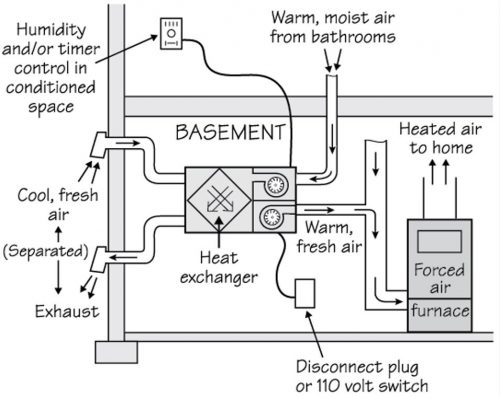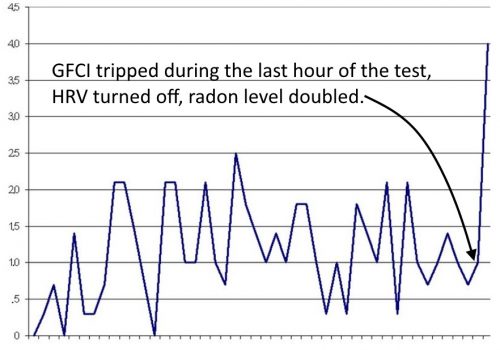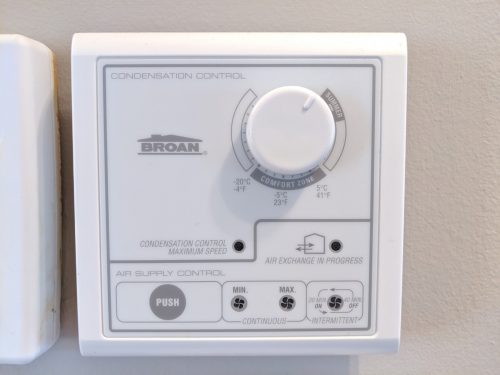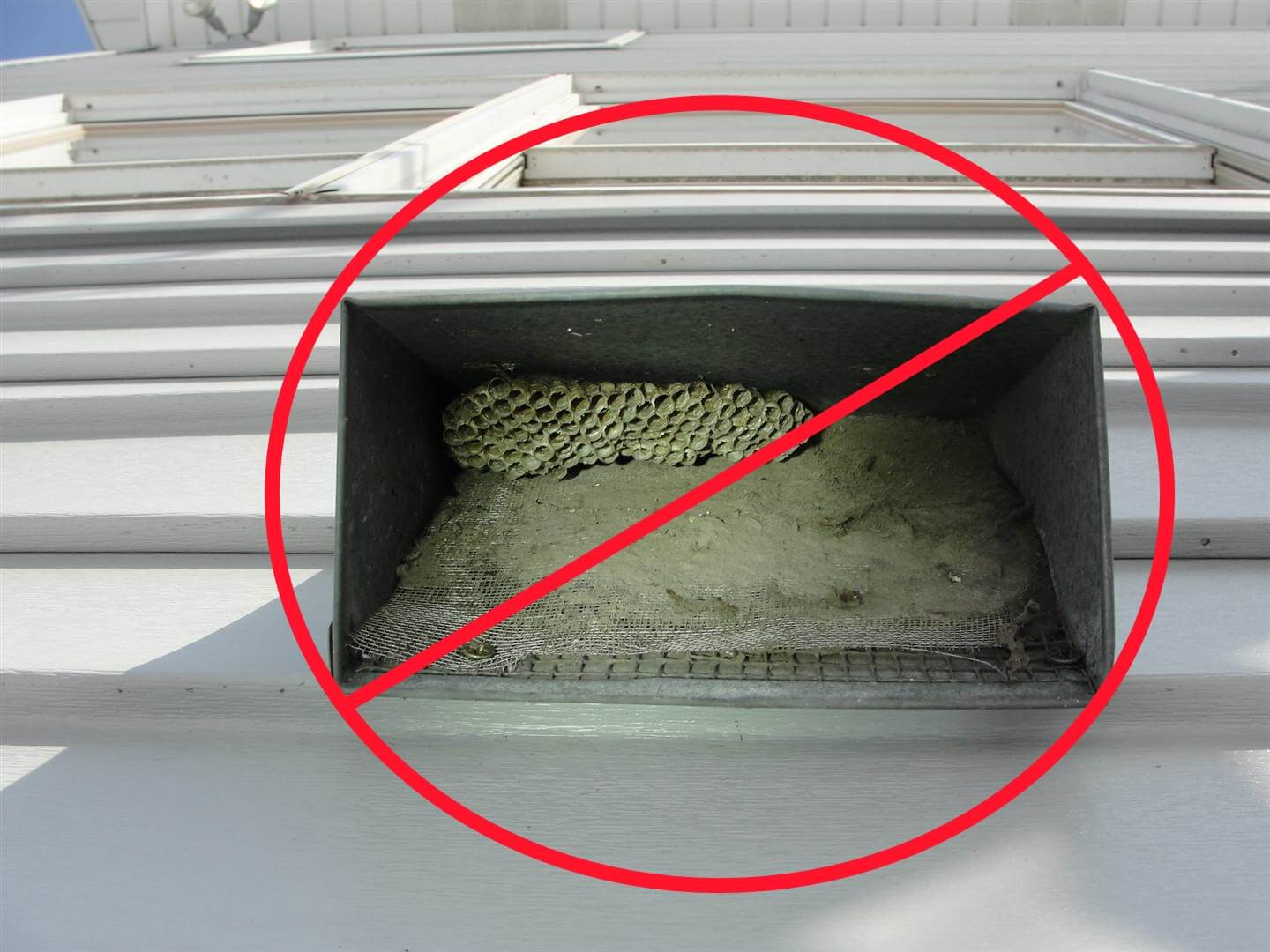When conducting a short-term radon test, should the air exchanger be running or not? Great question. I’ve heard it argued both ways. If a home is designed to have an air exchanger running, I say it ought to run during the radon test.
Here’s my video discussion on the topic:
What’s an air exchanger and how does it affect radon?
An air exchanger, also known as a Heat Recovery Ventilator (HRV) or Energy Recovery Ventilator (ERV) is a big box in the furnace room that exchanges the air in a home. You’ll typically have four ducts on these systems; one brings stale air into the unit from the house, a second brings stale air from the unit to the outdoors, and the other two do the opposite. They bring fresh air into the unit from the outdoors and then bring fresh air from the unit into the home.
Inside of the air exchanger, you’ll find a heat exchanger to recoup some of the lost energy. While an air exchanger typically isn’t installed as a radon mitigation system, a running air exchanger will reduce radon levels in the home*, because stale indoor air is replaced with fresh outdoor air.
* This assumes the unit has been properly installed and properly maintained.
I attended a seminar on air exchangers and radon back in 2004 where the instructor explained that an air exchanger running at full speed, 100% of the time, has the potential to cut radon levels in half. I can’t remember how he arrived at this conclusion, but it sounded good to me at the time.
My own personal experiences have been in line with this information. I once accidentally tripped a basement GFCI receptacle about halfway through my home inspection, which caused the HRV to turn off for the last hour of the radon test, which caused a huge spike in radon levels for that last hour. Here’s the graph from that test:
Authoritative Reference
When Minnesota required licensing at the beginning of this year to test for radon, we adopted ANSI/AARST Protocol for Conducting Measurement of Radon and Radon Decay Products in Homes (ANSI/AARST MAH-2014). You can find that information under Minnesota Statute 4620.7500 B (1). Unfortunately, MAH-2014 isn’t a public document, but I’ll share with you what it says about running an air exchanger during a radon test… which is law in Minnesota.
“Energy recovery or Heat Recovering ventilators: Normal operation of permanently installed ventilation systems that bring outdoor air into the home (also called air-to-air heat exchangers) is permitted to continue during closed-building conditions so long as the system is regularly maintained and continuously operational.”
It doesn’t specifically say that the air exchanger should run, but that it’s allowed to run. As far as I’m concerned, it’s a no-brainer. It should be running. If a home has an air exchanger, normal conditions are to have the air exchanger running. If the air exchanger doesn’t run while the radon test is being conducted, you don’t have normal conditions.
Of course, one might argue that “normal conditions” means the unit is unplugged and forgotten about, and the filters and screens are packed full of cottonwood and bugs. But I won’t say that. When my company inspects homes for new homeowners, we explain the importance of the operation and maintenance of air exchangers to our clients. We also take pictures and make recommendations for service when needed, which is most of the time.
What should the air exchanger be set to?
Different air exchangers have different settings to control how much they run during the day. Low, high, intermittent, 0%, 100%, and everything in the middle.
So how are you supposed to set your controller? I have no idea, and I wish you luck in trying to get a straight answer. I’ve asked that question to numerous building science professionals, and they all give the same answer: there’s no perfect answer. It depends on more factors than I could ever determine in the course of a home inspection, much less a radon test.
When we set a radon test, if the air exchanger is running, we leave the setting alone. If the air exchanger is off, we set it to “low” or whatever seems like a middle setting, and we record it. I encourage anyone else who tests for radon to do the same.
Watch out for dirty intakes!
While I said that an air exchanger will lower radon levels in a home, I’m assuming the system is properly installed and properly maintained. If a system isn’t properly maintained, it actually has the potential to increase radon levels. This can happen if the air intake is clogged and dirty, and most are.
If the air exchanger can’t bring fresh air into the home, the house will operate under negative pressure by exhausting more air than it’s sucking in. This can cause the air exchanger to suck radon gases into the home, which increases radon levels. For this reason, we at Structure Tech make a point of finding the air exchanger intake when we set the radon test, and we clean off the intake if it’s dirty.
Some might argue that the radon technician should leave everything the way that they found it. Don’t turn the air exchanger on, and don’t clean the intake. That’s certainly an option, and this is the way that we used to do things at Structure Tech. As our company grew and the number of tests that we conducted increased, we received an increasing number of complaints from people who wanted free re-tests because the air exchanger wasn’t running or the intake was dirty.
Once we started turning on the air exchanger during our tests and cleaning off the intakes, all of these complaints disappeared. Also, I think we started delivering more accurate, consistent results once we started doing this. Again, I encourage anyone else who tests for radon to do the same.






Thomas Peterson
August 2, 2019, 9:24 am
I like that you mentioned if a system isn’t maintained it can cause an increase to radon levels. I’ve been trying to help mitigate radon water and general radon in the home. I’d love to have a professional make sure that I’m protected from it.
G. Scott
September 12, 2019, 12:53 pm
Reuben, Great article. You might want to run it past your attorney however. You state that “If the air exchanger doesn’t run while the radon test is being conducted, you don’t have normal conditions.” also “If a system isn’t properly maintained, it actually has the potential to increase radon levels. This can happen if the air intake is clogged and dirty, AND MOST ARE.” If it is off or dirty when you arrive, those ARE normal operating conditions. To make things worse (for you) your website acknowledges that you KNOW most ARE dirty.
If you turn it on or clean it, an attorney could argue that effectively YOU are creating a FALSE or Misleading Report in order to present a result favorable to your client. They could try to hold you liable since you have posted that Most are Dirty. They could argue that therefore you are aware of this fact and you changed it.
I understand where you are coming from, but I fear you may have significantly increased your risk. You might consider going back to your original way of checking things as they are when you arrive, but stress to anyone WHEN they Order the test to make sure the intake is clean and functioning otherwise a second test (and second charge) may be required. That places the liability directly on them, not you, and you have prepared a accurate report on the system “as found.”
It is a shame that we have to even think about how an attorney might view our websites, but it is something to consider.
Reuben Saltzman
September 12, 2019, 2:03 pm
Great points, Scott. Thank you for your comments. We’ve debated that exact topic at length amongst my company, and here’s our rationale for our stance: the vast majority of the radon tests that we conduct are for home buyers. We don’t have any communication with the homeowners before coming out. We send a letter explaining the whole radon testing process to our point of contact, the listing agent, who is supposed to forward that information to the home seller. That rarely happens, despite our best efforts. In other words, it’s just about impossible to get homeowners to do maintenance on their homes prior to us coming out.
Not only that, but we tell every one of our clients about the importance of cleaning the air intake, both in-person when we conduct our inspections, and in our inspection reports. My belief is that our past customers are better educated than most other homeowners, and because of this, they stay on top of things like cleaning their air intakes.
As you said, it’s a shame that we even have to deliberate over this.